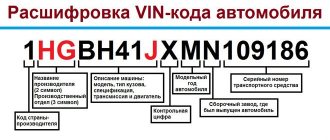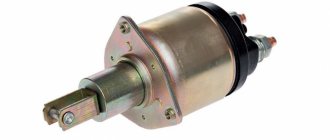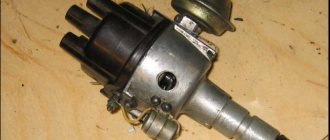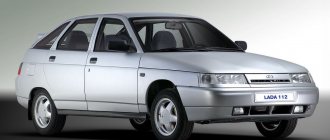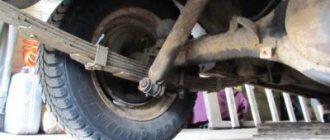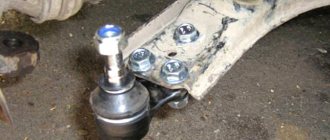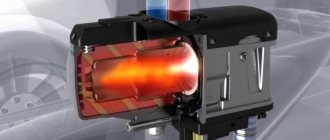Technical characteristics of the VAZ 2110,2111, 2112 engine
The engine was installed on such popular AvtoVAZ models as VAZ-2110, VAZ-2111 and VAZ-2112.
- Displacement - 1499 cc.
- Number of cylinders - 4 pcs.
- Number of valves - 16 pcs.
- Maximum power - 93 hp/5600 rpm.
- Maximum torque - 128 Nm/3700 rpm.
- Maximum engine power is 93 hp.
- Compression ratio – 10.5
- Gasoline octane number - 95
- Environmental standards - Euro 3
- Acceleration 0 - 100 km/h - 11.9 seconds.
- Combined cycle consumption - 7.2 L/100 km
- Engine life - 200 - 250 thousand km.
- Valves - oppression
Tuning
It is noteworthy that tuning a VAZ engine, as well as its repair, is possible for any owner who has at least a little knowledge of the technical characteristics of VAZ engines and has encountered repairs or overhauls of the engine.
But here the choice is between efficiency and power. Knowledge of which engines bend the valves is also important. The approaches to them are very complex.
The most common is tuning the VAZ engine, which increases the output parameters. For example, installing a new camshaft with an adjustable pulley, replacing connecting rods and pistons to increase displacement.
Well, in order for the power to be realized into the dynamic data of the car, the gearbox ratios are changed. This is the most budget-friendly VAZ engine tuning without any outside interference in the auxiliary units, despite the fact that this same tuning can be much more extensive.
It is worth remembering that any increase in power leads to additional fuel consumption and reduces the life of the unit; accordingly, it requires increased attention to maintenance and replacement of consumables. Therefore, the issue of tuning must be approached painstakingly and it is advisable that a person well versed in this take part in this.
Technical characteristics of the VAZ 21114 and 11183 engine
The engine was installed on such popular AvtoVAZ models as Lada Kalina, VAZ 2108, 21083, 2109, 21093, 21099, 2113, 2114, 2115, 2110, 2111, 2112.
- Displacement - 1596 cc.
- Number of cylinders - 4 pcs.
- Number of valves - 8 pcs.
- Maximum power - 81 hp / 5200 rpm.
- Maximum torque - 125 Nm/3000 rpm.
- Maximum engine power - 81 hp.
- Compression ratio – 9.6
- Gasoline octane number - 92.95
- Environmental standards - Euro 2,3,4
- Acceleration 0 - 100 km/h - 12.9 seconds.
- Combined cycle consumption - 7.6 L/100 km
- Engine life - 150 - 250 thousand km.
- Valve - no bending
“Zhiguli” is the most common car of Soviet, and later Russian production. Under this name, seven models are united on a common rear-wheel drive platform, which were produced at the Volzhsky Automobile Plant (VAZ) from 1970 to 2012. Today they are called “classics” to separate them from the next front-wheel drive family, the VAZ Sputnik (Lada Samara). The ancestor of the series was the VAZ-2101 - the first car produced in Tolyatti, a twin of the Italian Fiat 124 sedan. It was also the first Soviet model designated in accordance with the industry norm of 1966, which established standard indices for cars of different classes (in this case, the number " 21" meant a small class with an engine capacity of 1100-1800 cm3, "01" was the serial number of the model, and subsequent numbers indicated the modification). On the territory of the USSR, the first generation Zhiguli was sold under the official name VAZ-2101, and in the 80s. The nickname “Kopeyka” stuck with them. In other countries, the car became known as the Lada 1200/1300, since the word “Zhiguli” is difficult to pronounce in European languages and is consonant with the negative concept of gigolo. With the collapse of the Soviet Union, VAZ began to produce all its models under the Lada brand.
At the end of the 60s. The largest automobile factories of the USSR - Izhevsk and AZLK - produced no more than 200,000 cars per year. This was not enough to satisfy the need for personal transport for a rapidly growing population, and besides, Moskvich brand products by that time no longer met international standards. Another reason for the construction of a new enterprise is the need to put into circulation the funds accumulated by Soviet citizens due to the general shortage: a modern car could become a very popular product for many years to come. In 1966, Soviet Vneshtorg concluded an agreement on scientific and technical cooperation with the Italian company Fiat, according to which Fiat provided the Russian side with a plant design and a license to produce one of its small cars, modified for operation in unfavorable climatic and road conditions, and also carried out training of Soviet specialists in Italy. In 1967, in the city of Stavropol, renamed Togliatti (in honor of the Italian communist who staged a strike at the Fiat plant in the 20s), construction of the auto giant Volzhsky Automobile Plant began.
The Fiat 124, recognized as the “European Car of the Year” in 1967, was chosen as the prototype for the basic VAZ model. However, tests carried out on Russian roads showed its unreliability and poor cross-country ability, so the Italians had to significantly revise the design of the car and designate the resulting version as the Fiat 124R. The main changes affected the chassis and transmission: the car received drum brakes on the rear wheels instead of disc brakes, a reinforced front suspension on wishbones and coil springs, a new rear axle on springs and five reaction rods instead of one reaction pipe, increased clutch and improved synchronizers in 4- step manual transmission. In addition, Soviet engineers demanded that an essentially new power unit be developed for the VAZ-2101 - an in-line 4-cylinder with a camshaft in the cylinder head (OHC) and a two-chamber vertical carburetor DAAZ-2101 (Weber 32 DCR), with a volume of 1198 cm3 and a power of 64 hp The original Fiat 124 engine with the same displacement developed 60 hp, but its OHV valve design was unpromising for further development. The wheelbase remained unchanged - 2424 mm.
The VAZ-2101 was more advanced than its Italian counterpart in many respects. Its body was made of thicker sheets of metal, which increased its durability, but affected the weight of the car. Increased ground clearance and the addition of towing eyes made it easier to use on country roads. Safety has been improved by strengthening the supporting structure in some areas, installing recessed door handles and “fangs” on the front and rear bumpers. In the cabin, the VAZ-2101 was equipped with seats that could be transformed into full-fledged berths. Standard equipment included a heater, windshield washer, side window vents and a Hungarian RD-3602 radio. Early examples were equipped with floor pedals instead of outboard pedals, an auxiliary fuel pump and a handle for starting the engine in winter. It should be noted that in terms of manufacturability, dynamic characteristics, build quality and ease of maintenance, the VAZ-2101 was an order of magnitude higher than all other Soviet-made cars, which ensured high consumer demand for the entire production period.
The first VAZ-2101 rolled off the assembly line of the Tolyatti plant on April 19, 1970. By the end of the year, 21,530 units were built, in 1971 - already 172,175 units, and the planned production volume was 660,000 units. per year the enterprise reached in 1974. Sales of the car were high from the very beginning, so that most Soviet citizens were forced to sign up and wait for a car for years. In 1971, the Lada 1200 was exported to Yugoslavia, Finland, Czechoslovakia, Hungary, East Germany and Cuba, and in 1974, when the Fiat 124 was discontinued, AvtoVAZ was able to sell the model in Western Europe. In the UK the Lada 1200 cost £979. Almost immediately, the VAZ-2101 demonstrated its racing potential inherent in the design of the power unit. In 1971, the car took part in the USSR rally and circuit racing championships, as well as in the 14,000 km Tour of Europe-71 marathon, where the factory team won the silver cup. The high power density made it possible to use the VAZ-2101 as a police vehicle in the USSR and the countries of the socialist bloc.
In 1974, a modernized version of the Zhiguli appeared - VAZ-21011 (Lada 1300). It was equipped with an engine capacity of 1294 cm3 (69 hp) and was distinguished by a radiator grille with more frequent horizontal crossbars and ventilation slots above the front bumper, rubber pads on the bumpers instead of “fangs”, interior ventilation holes in the rear pillars, rear reflectors with a rear light travel, more comfortable seats and a modified location of some controls. The modification of the VAZ-21011 with a 1.2-liter engine was called VAZ-21013 (Lada 1200S), and the modification of the base VAZ-2101 with a 1.3-liter engine was called VAZ-21016. There were also right-hand drive versions of the VAZ-21012 and VAZ-21014 and experimental series of the VAZ-21018 and VAZ-21019 with rotary engines. High-performance modifications for the police and special services were called VAZ-21015 “Karat” (with a VAZ-2106 engine) and VAZ-2101-94 (with a VAZ-2103 engine). Total from 1970 to 1988 About 4.85 million VAZ-2101 sedans of all modifications were produced. In 2000, according to the results of an all-Russian survey conducted by the magazine “Behind the Wheel,” the VAZ-2101 was named the best domestic car of the 20th century.
Technical characteristics of the VAZ 21116 and 11186 engine
The engine was installed on such popular AvtoVAZ models as Lada Granta, Lada Kalina 2.
- Displacement - 1596 cc.
- Number of cylinders - 4 pcs.
- Number of valves - 8 pcs.
- Maximum power - 87 hp/5100 rpm.
- Maximum torque - 140 Nm/3800 rpm.
- Maximum engine power - 87 hp.
- Compression ratio – 10.5
- Gasoline octane number - 95
- Environmental standards - Euro 4
- Acceleration 0 - 100 km/h - 10.9 seconds.
- Combined cycle consumption - 7.2 L/100 km
- Engine life - 200 - 250 thousand km.
- Valve - no bending
Technical characteristics of the VAZ 21214 engine
The engine was installed on such popular AvtoVAZ models as Chevrolet Niva and LADA 4×4.
- Working volume - 1690 cc.
- Number of cylinders - 4 pcs.
- Number of valves - 8 pcs.
- Maximum power - 81 hp/5200 rpm.
- Maximum torque - 125 Nm/3000 rpm.
- Maximum engine power - 81 hp.
- Compression ratio – 9.4
- Octane number of gasoline - 92.95
- Environmental standards - Euro 4
- Acceleration 0 - 100 km/h - 12.9 seconds.
- Combined cycle consumption - 10.5 L/100 km
- Engine life - 100 - 150 thousand km.
- Valve - no bending
Service
Maintenance of the Lada “Classic” engine is often carried out at home. This is due to the simplicity of the design. Maintenance is quite simple for the Lada Classic engine. An oil change is carried out every 10,000 km.
It includes changing the lubricant and oil filter element. The amount of oil required for replacement is 4-4.5 liters. When choosing an oil, everything is simple; the manufacturer recommends using a mineral lubricant.
But, as practice has shown, semi-synthetic motor oil is best suited.
Technical characteristics of the VAZ 21124 engine
The engine was installed on such popular AvtoVAZ models as VAZ-2110, VAZ-2111 and VAZ-2112.
- Displacement - 1599 cc.
- Number of cylinders - 4 pcs.
- Number of valves - 16 pcs.
- Maximum power - 89 hp/5000 rpm.
- Maximum torque - 131 Nm/3700 rpm.
- Maximum engine power is 89 hp.
- Compression ratio – 10.3
- Gasoline octane number - 95
- Environmental standards - Euro 4
- Acceleration 0 - 100 km/h - 10.7 seconds.
- Combined cycle consumption - 7.5 L/100 km
- Engine life - 200 - 250 thousand km.
- Valve - no bending
Interesting on the site: VAZ 2107 injector
Main manufacturers of internal combustion engines in Russia
In total, there are about 30 engine factories in the Russian Federation. But only four of them are engaged in large-scale production of engines for civilian use:
- UMZ is an Ulyanovsk plant specializing in the production of diesel and gasoline engines of EURO-4 and EURO-5 standards. Its products are used on cars, jeeps and small utility vehicles;
- ZMZ is a Zavolzhsky plant that produces in-line four-cylinder power units with a gasoline-type fuel system. Main target audience: passenger cars;
- AvtoVAZ is a Volzhsky plant specializing in the production of passenger cars, SUVs and their components, including engines. The manufacturer has a whole line of gasoline internal combustion engines with carburetor and injection power systems;
- GAZ is a Nizhny Novgorod plant that produces engines for cars, trucks and passenger cars. The samples he proposed are of only two types: in-line 4 and 6 cylinder.
Other engine factories, such as KAMAZ, TMZ, etc., produce power units exclusively for specialized equipment. Their products are widely popular abroad. But in terms of the reach of the target audience, they can be called highly specialized.
Technical characteristics of the VAZ 21126 engine
The engine was installed on such popular AvtoVAZ models as Priora, Granta, Kalina 2.
- Displacement - 1597 cc.
- Number of cylinders - 4 pcs.
- Number of valves - 16 pcs.
- Maximum power - 98 hp/5600 rpm.
- Maximum torque - 145 Nm/4000 rpm.
- Maximum engine power is 98 hp.
- Compression ratio – 11
- Gasoline octane number - 95
- Environmental standards - Euro 4
- Acceleration 0 - 100 km/h - 10.1 seconds.
- Combined cycle consumption - 7.2 L/100 km
- Engine life - 200 - 300 thousand km.
- Valves - oppression
Technical characteristics of the VAZ 21128 engine
The engine was installed on such popular AvtoVAZ models as VAZ 21104, Lada 2112 Coupe 1.8, Lada Priora 1.8
- Working volume - 1796 cc.
- Number of cylinders - 4 pcs.
- Number of valves - 16 pcs.
- Maximum power - 98 hp. /5200 rpm
- Maximum torque - 162 Nm/3200 rpm.
- Maximum engine power is 98 hp.
- Compression ratio – 10.5
- Gasoline octane number - 95
- Environmental standards - Euro 4
- Acceleration 0 - 100 km/h - 9.8 seconds.
- Combined cycle consumption - 7.5 L/100 km
- Engine life - 100 - 150 thousand km.
- Valves - oppression
There is also an interesting article on the site about the boxer engine
Technical characteristics of the Lada Granta Sport 120 hp engine.
- Displacement - 1597 cc.
- Number of cylinders - 4 pcs.
- Number of valves - 16 pcs.
- Maximum power - 118 hp/5900 rpm.
- Maximum torque - 154 Nm/4740 rpm.
- Maximum engine power is 118 hp.
- Compression ratio – 11
- Gasoline octane number - 95
- Environmental standards - Euro 4
- Acceleration 0 - 100 km/h - 9.3 seconds.
- Combined cycle consumption - 7.8 L/100 km
- Engine life - 250 - 300 thousand km.
- Valves - oppression
Technical characteristics of the VAZ 21129 engine
The engine is installed on such popular AvtoVAZ models as the VAZ 2180
- Displacement - 1599 cc.
- Number of cylinders - 4 pcs.
- Number of valves - 16 pcs.
- Maximum power - 106 hp. /4800 rpm
- Maximum torque - 148 Nm/4000 rpm.
- Maximum engine power - 106 hp.
- Compression ratio – 11
- Gasoline octane number - 95
- Environmental standards - Euro 4
- Acceleration 0 - 100 km/h - 9.6 seconds.
- Combined cycle consumption - 7.2 L/100 km
- Engine life is 250 thousand km.
- Valves - oppression
Conclusion
Therefore, to summarize and name the best VAZ engine, we give preference to the 21127 power unit, which in all respects is ahead of its competitors in this impromptu rating, but with one amendment, since its owners should be prepared for significant financial costs in the event of unexpected malfunctions . This top of the best is our subjective opinion and you may well either support it or disagree with our opinion. You can always present your arguments on this matter with reviews in the comments on the forum, share interesting photos and videos, and also offer your own options, which, in your opinion, are worthy of the title of the best VAZ engine.
Share with your friends:
